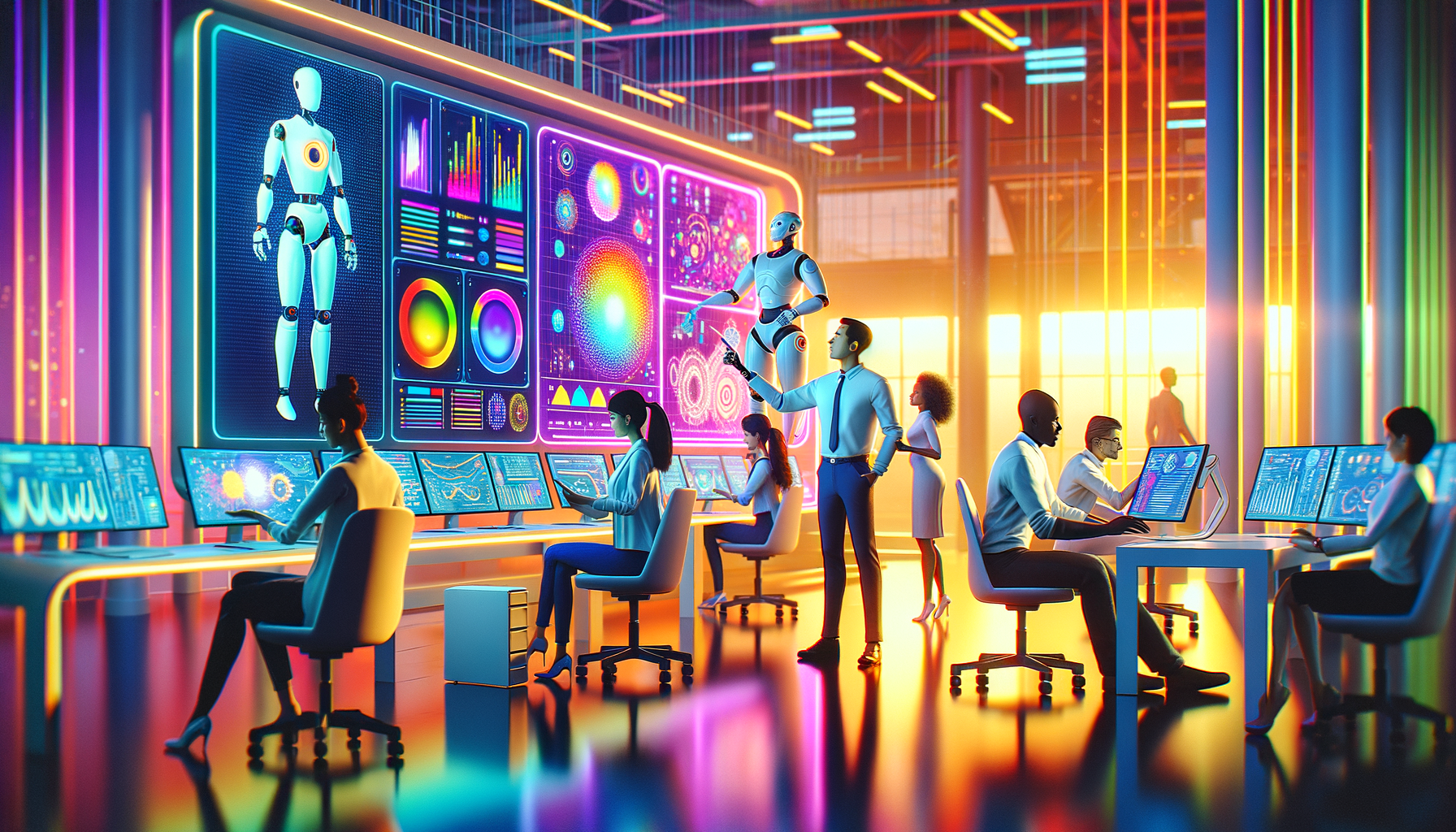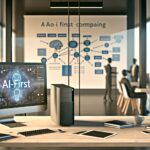Unlocking the Transformative Power of AI in Business
In the ever-evolving landscape of modern enterprises, Artificial Intelligence (AI) stands as a game-changer, reshaping the way businesses operate and thrive. This groundbreaking technology is no longer a mere concept; it has become a driving force, propelling companies towards unprecedented levels of efficiency, innovation, and customer-centric experiences. This article will explore how AI is revolutionizing various aspects of business, providing real-world examples, addressing potential concerns, and offering actionable advice for organizations looking to harness the power of AI.
Streamlining Operations and Boosting Efficiency
One of the most significant advantages of AI lies in its ability to automate repetitive and time-consuming tasks. By harnessing the power of advanced machine learning algorithms, businesses can offload mundane processes to AI systems, freeing up valuable human resources to focus on more strategic and creative endeavors. This automation not only accelerates productivity but also minimizes the risk of human error, which can be particularly detrimental in high-stakes environments.
Customer service is a prime example of how AI is revolutionizing business operations. Intelligent chatbots and virtual assistants can handle routine inquiries, provide instant responses, and even escalate complex issues to human agents when necessary. For instance, companies like Zendesk leverage AI-driven chatbots to enhance their customer service capabilities, resulting in faster response times and improved customer satisfaction. This not only enhances customer satisfaction but also reduces operational costs, as businesses can operate with fewer staff members dedicated to handling basic inquiries.
Moreover, AI’s robust data processing capabilities empower businesses to make informed decisions faster and more accurately. By analyzing vast amounts of data, AI can uncover insights that would be nearly impossible for humans to discern, facilitating demand forecasting, supply chain optimization, and strategic resource allocation. For example, retailers employing AI algorithms can predict shopping trends and adjust inventory levels accordingly, ensuring that they meet customer demand without overstocking or understocking. This efficiency leads directly to cost savings and increased profitability.
Driving Innovation and Unlocking New Opportunities
AI’s ability to identify patterns and connections that humans might overlook opens up a world of possibilities for innovation. By leveraging AI in product development, competitive intelligence, and predictive maintenance, businesses can stay ahead of the curve and gain a competitive edge in their respective markets. The insights gathered from AI can lead to innovative products that are more aligned with consumer preferences and market trends.
For instance, companies like Procter & Gamble utilize AI to analyze customer behavior, preferences, and feedback, which informs the design and development of new products tailored to specific market segments. AI-driven analytics enables businesses to adapt their offerings rapidly, ensuring they remain relevant in a fast-paced market. Additionally, AI can monitor market trends, competitor strategies, and emerging technologies, enabling businesses to proactively adapt and seize new opportunities. This proactive stance is critical for maintaining competitiveness in today’s dynamic business environment.
Furthermore, AI can enhance research and development processes by simulating various scenarios and outcomes, allowing companies to test hypotheses and refine products before launching them to the public. This not only speeds up innovation but also reduces the risks associated with new product development.
Elevating Customer Experiences
In today’s customer-centric business landscape, AI plays a pivotal role in delivering personalized and seamless experiences. By analyzing extensive customer data, AI algorithms can provide highly relevant product recommendations, personalized marketing campaigns, and tailored communication strategies that resonate with individual consumers. This level of personalization is increasingly expected by customers and can significantly impact customer loyalty and retention.
Chatbots and virtual assistants powered by AI can engage customers in real-time, providing instant support and resolving issues promptly. Companies like Starbucks have successfully integrated AI into their customer interactions, allowing customers to place orders through an AI-powered app that learns their preferences over time. This not only enhances customer satisfaction but also fosters brand loyalty and trust, as customers feel understood and valued.
Moreover, AI-driven sentiment analysis can help businesses understand customer emotions and sentiments, enabling them to proactively address concerns and optimize their products or services accordingly. For instance, tools like Brandwatch can analyze social media conversations to gauge public sentiment towards a brand or product, allowing companies to make data-driven adjustments in their marketing strategies.
Transforming Business Processes
AI’s impact extends far beyond automation and customer interactions; it is also transforming core business processes across various sectors. From inventory management and content production to cybersecurity and risk assessment, AI is revolutionizing how businesses operate and make critical decisions. This transformation enables organizations to optimize their operations and respond quickly to ever-changing market conditions.
In the realm of inventory management, AI can analyze historical data, demand patterns, and external factors to optimize stock levels, reducing the risk of overstocking or understocking. Retail giants like Walmart employ AI to manage their supply chain effectively, ensuring that products are available when and where customers want them. This not only minimizes waste and costs but also ensures timely delivery, enhancing customer satisfaction.
Additionally, AI-powered content generation tools can assist in creating high-quality, engaging, and personalized content at scale. For example, companies like Jasper use AI to generate marketing copy, blog posts, and social media updates that resonate with target audiences. This streamlining of content production not only saves time but also enables businesses to maintain a consistent and relevant presence across multiple channels.
Fostering Sustainability and Supply Chain Resilience
As businesses increasingly prioritize environmental, social, and governance (ESG) initiatives, AI emerges as a valuable ally in driving sustainability and supply chain resilience. By leveraging AI’s predictive capabilities, companies can optimize resource utilization, minimize waste, and reduce their overall environmental footprint. This is particularly important as consumers and regulatory bodies alike demand greater accountability from businesses regarding their sustainability practices.
AI can enhance supply chain visibility and collaboration, enabling businesses to proactively identify and mitigate potential disruptions. For example, AI-driven platforms like Llamasoft provide companies with the ability to simulate various supply chain scenarios, allowing them to anticipate and prepare for disruptions caused by factors such as natural disasters or geopolitical events. Through real-time monitoring and predictive analytics, AI can alert companies to potential supply chain risks, facilitating swift decision-making and contingency planning.
Furthermore, AI can assist in optimizing energy consumption and resource allocation, contributing to a company’s sustainability goals. Businesses can leverage AI to analyze energy usage patterns, identify inefficiencies, and implement more sustainable practices across their operations. This not only reduces costs but also positions companies as responsible corporate citizens in the eyes of consumers and stakeholders.
Embracing the Future of AI in Business
While the impact of AI on certain jobs remains a concern, experts predict that AI will create more jobs in the short term, particularly in areas such as workflow integration and AI system development. As businesses continue to embrace AI, new roles and skill sets will emerge, requiring a workforce equipped with the necessary expertise to harness the power of this transformative technology. Organizations must prioritize reskilling and upskilling initiatives to prepare their employees for the future workforce landscape.
Across various industries, from healthcare and transportation to manufacturing and finance, AI is already making its mark. For example, AI is used in digital pathology image analysis to assist healthcare professionals in diagnosing diseases more accurately. In the transportation sector, companies like Tesla are leveraging AI for autonomous driving technology, revolutionizing the way we think about mobility. From fraud prevention to renewable energy optimization, the applications of AI are vast and ever-expanding.
As AI continues to evolve, businesses must remain agile and willing to adapt to new technologies and methodologies. This adaptability will be crucial in ensuring that companies can thrive in a future increasingly influenced by AI advancements.
Conclusion
As the world of business continues to evolve, the adoption of AI is no longer a choice but a necessity for companies seeking to remain competitive and future-proof their operations. By embracing AI, businesses can unlock unprecedented levels of efficiency, innovation, and customer-centric experiences, positioning themselves as leaders in their respective industries. The integration of AI into business processes can lead to significant improvements in productivity, customer satisfaction, and overall profitability.
However, the successful integration of AI requires a strategic and holistic approach. Business leaders must educate themselves and their employees about the benefits and applications of this transformative technology. As awareness and understanding of AI’s potential grow, its adoption will continue to accelerate, paving the way for a future where humans and machines work in harmony, driving businesses towards new heights of success.
Sources:
.
This article is generated by SafeComs AI, Automation Bot.





Leave a Reply